The machinations of the Nuffield Organisation created obstacles for MG in the immediate post-war period. They sought to capitalise on the undoubted potential and marketing cache the MG brand had accrued in motorsport by expanding production and developing a new car.
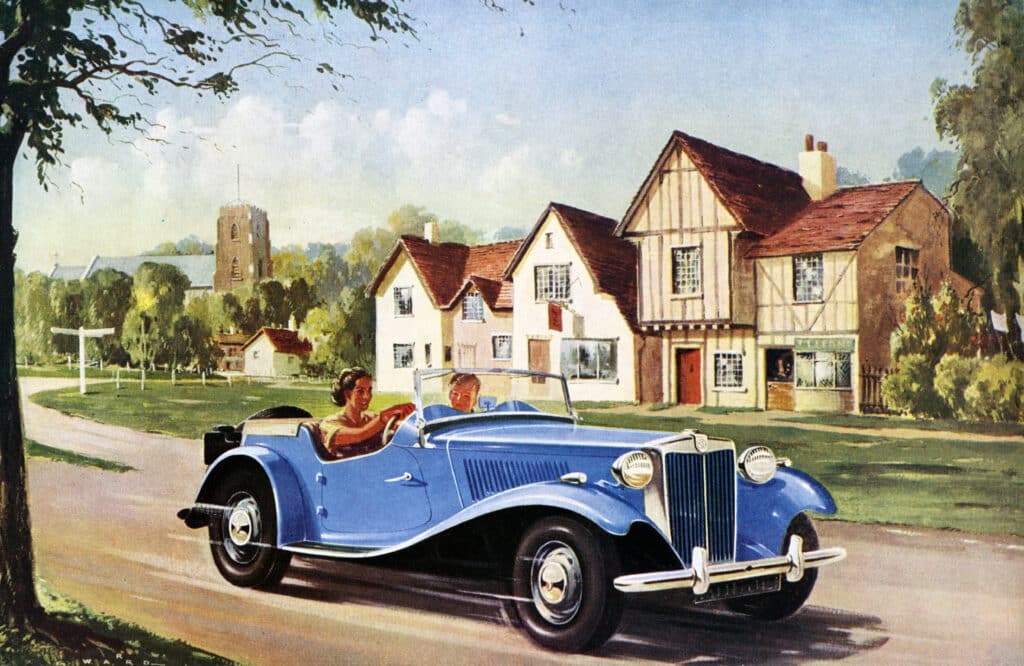
The MG TD brochure showed an idyllic English country scene, but in reality, the vast majority went to North America.
Succession Planning
As we saw in part one, the TC was an enormous success for MG with 10,000 being made in four years. But one, let’s be honest, that initially (at least slightly) surprised most people inside the company.
Within a year of the TC’s introduction in 1945, MG was dealing with a demand level, and the consequent production volumes, that were in a different league to anything the Abingdon factory had attempted before.
This success was partly the result of the company being quick off the mark in getting a car to the market as hostilities ceased, and partly due to North American enthusiasts who’d learned to love European sports cars in the war years and taken that passion back home. Thus, the vast majority of TCs were exported even though it was not available in the left-hand drive.
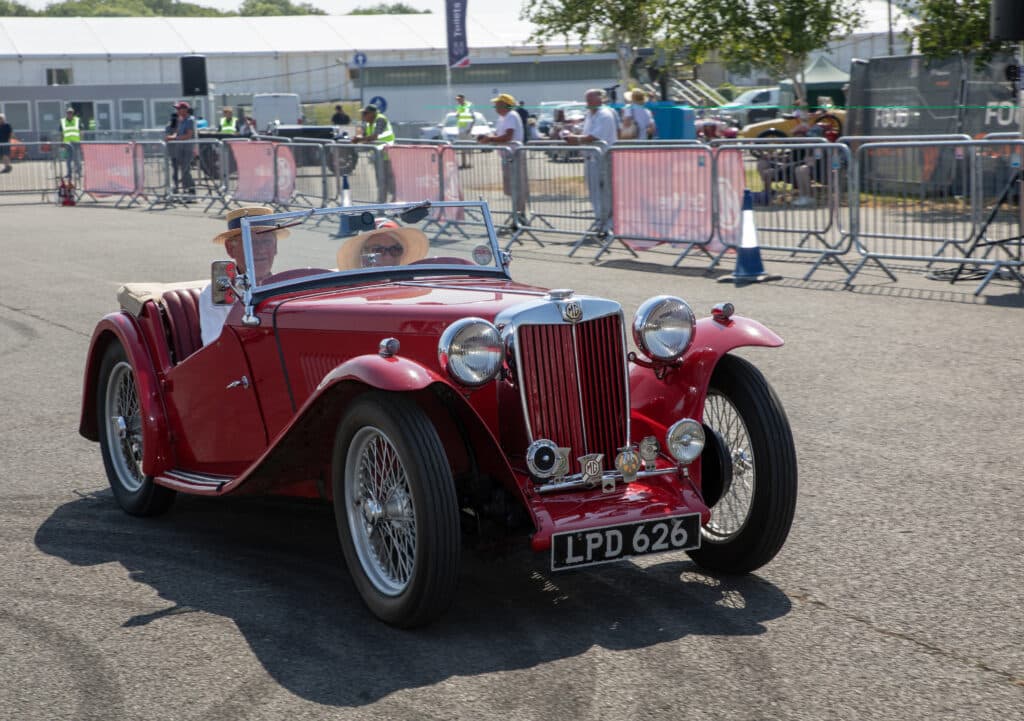
The MG TC was a quick post war solution.
MG Y-Types and Rileys
That success was almost MG’s undoing since it led to complacency inside the Nuffield Group. Abingdon was also occupied with producing the new MG Y-Types and Riley’s elegantly dated, but very capable RM models. Nuffield was content to let that situation carry on as they had plenty on their plate designing a new mainstream Morris range.
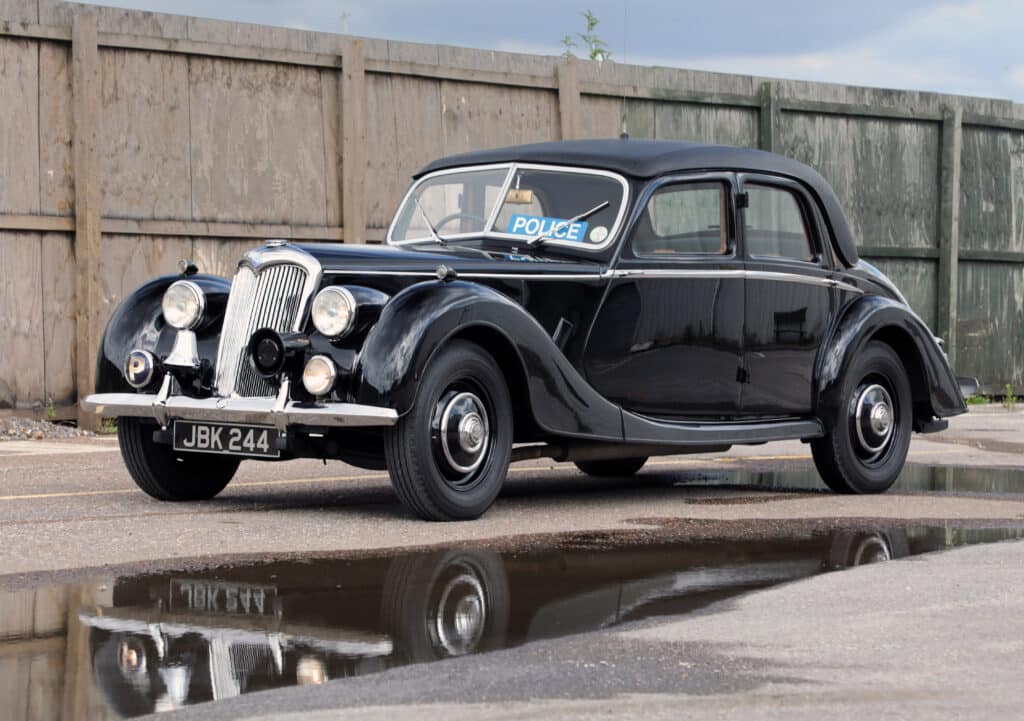
This RMF was originally a high-speed response car for Portsmouth City Police and has been restored to its original police livery.
The graceful RM series Rileys were initially produced at the firm’s historic base in Coventry in 1946. As Nuffield, and then BMC, began to rationalise, production was moved to MG’s works in Abingdon. 22,909 were made before it ceased in 1955.
That’s a fair number for a car that had a separate chassis and wooden framed body in an era when steel monocoque construction was becoming the norm. The RM range remained competitive in handling and performance until its demise. This made them popular with many police forces despite their quality meaning that they were reassuringly expensive compared to ostensibly similar machinery.
The Nuffield Group provided many vehicles and power units to the British Government. It is likely they offered the police a good deal for bulk purchases. Their marketing department also understood the PR benefits of having their cars used by the police. Its 2.5-litre ‘big-four’ endowed it with performance that perhaps belied its appearance as it could nudge 100mph and do 0–60 mph in 16 seconds.
Ancestors
MG had effectively started out as what would now be called a tuning shop. Just as AMG was to Mercedes many years later, so MG was to Morris. The first cars were made in very small numbers.
The first high-volume machine, the 847cc OHC M-Type Midget, had been launched to great acclaim and consequent demand at the 1928 London Motor Show. MG had designed and built a new factory at Edmund Rd. in Oxford, which had cost over £20,000, 60% more than was originally budgeted!
New Factory
They had moved into this in 1927, confident at the time that it would serve them well for many years to come. The new factory helped MG to make 341 cars in 1927 and while the new factory allowed for an increase, it was designed to build hundreds of cars, not thousands.

An M-Type Midget competing in the California Cup at the MG Triumph 100 event at Silverstone.
The immediate sales success of the M-Type Midget changed all that. To the point where the new factory was almost immediately inadequate and, if the company wanted to capitalise on the orders it was receiving for M-Types, they needed more space.
The former Pavlova Leather Works at Abingdon was purchased in March 1929. It would remain MG’s home until the last MGB rolled off the line in 1980. The entire M-Type production line was moved there later in 1929. This enabled MG to produce 3,250 M-Types in four years, quite an achievement at the time.
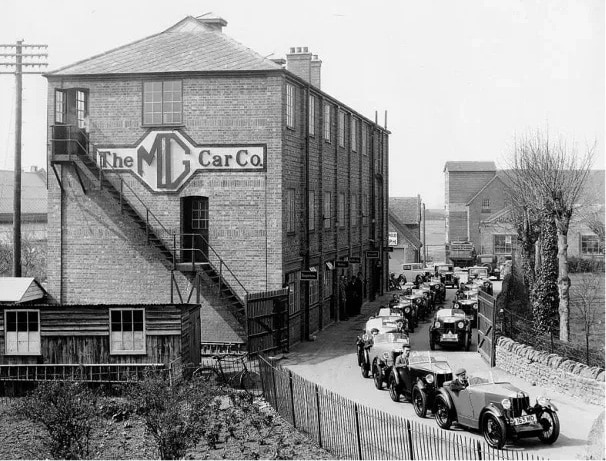
M-Type Midgets leaving the Abingdon factory in 1930.
The following OHC-Midgets, the J-Type and P-Type, were built in similar volumes before being phased out in 1936. The last P-types were produced during a period of great corporate change for MG, however, the change would go on to have a direct effect on the cars made and the components used to make them.
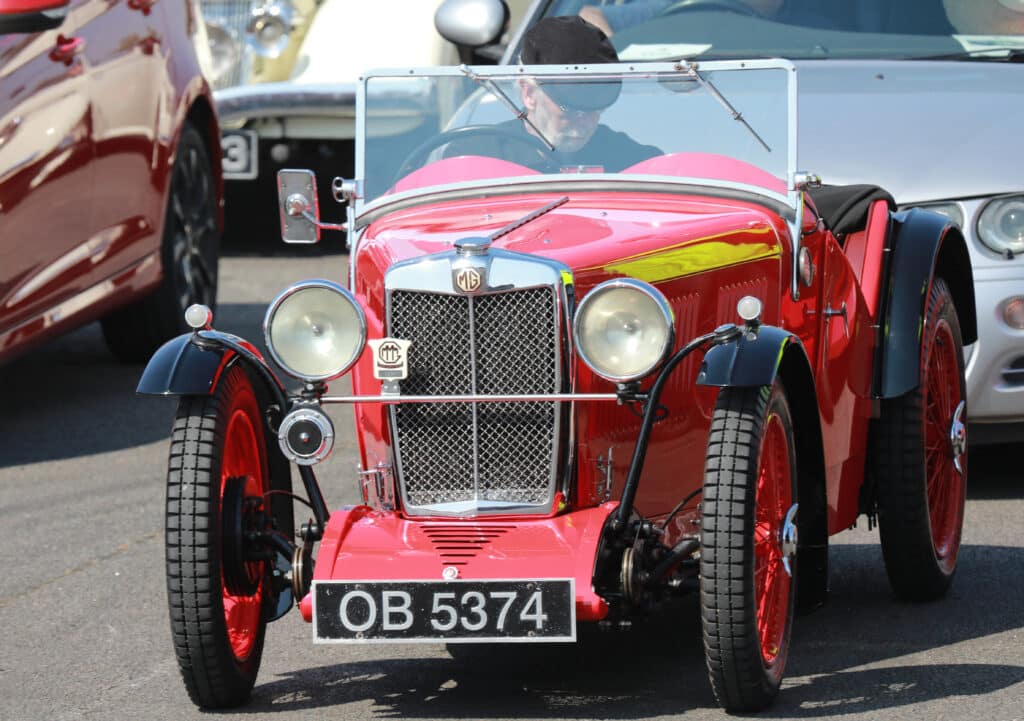
1933 MG Midget J2
M.G. Joins the Group
William Morris (the man not the company) had purchased troubled Wolseley in 1927 and he also personally owned MG. MG had been grown organically by the dynamism and vision of Cecil Kimber but never owned by him.
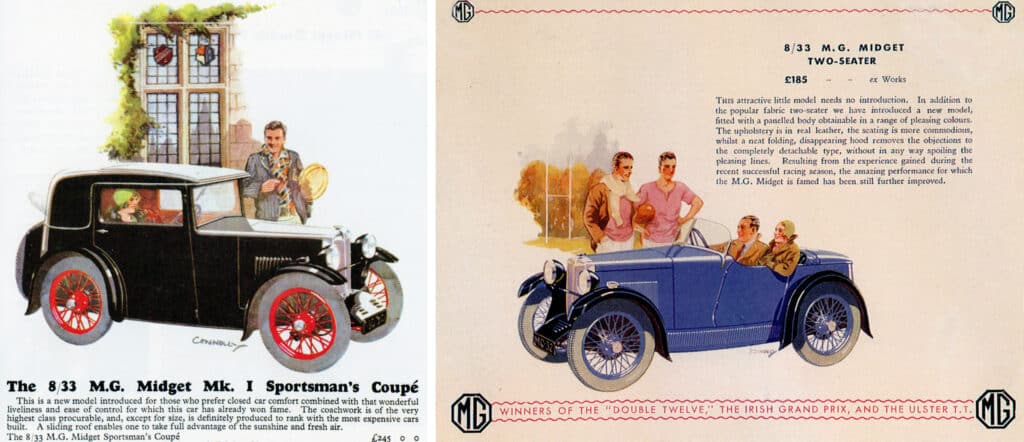
Cecil Kimber was keen to establish MG (or M.G. as it was then) as stylish and, in an age before commercial photography became the norm, employed a number of artists to create life affirming paintings of MGs being used in glamourous and fun locations. Foremost of these was Wolverhampton-born WW1 veteran Harold Connolly. Harold was a self-taught illustrator who worked for several clients as a commercial artist but specialised in motoring images. His family have published a book called the Motoring Art of Harold Connolly, which is well worth seeking out.
Morris became Lord Nuffield in 1934. On July 1st,1935, he rationalised and restructured his businesses after taking advice from one Leonard Lord. Leonard Lord was a senior manager at Morris Motors Limited (M.M.L.), who would re-enter the MG story as BMC’s boss in the early 1950s. Morris sold both MG and Wolseley to M.M.L., creating the Nuffield Organisation. This increased the importance of sharing some parts between brands. Riley would join this group in 1938.
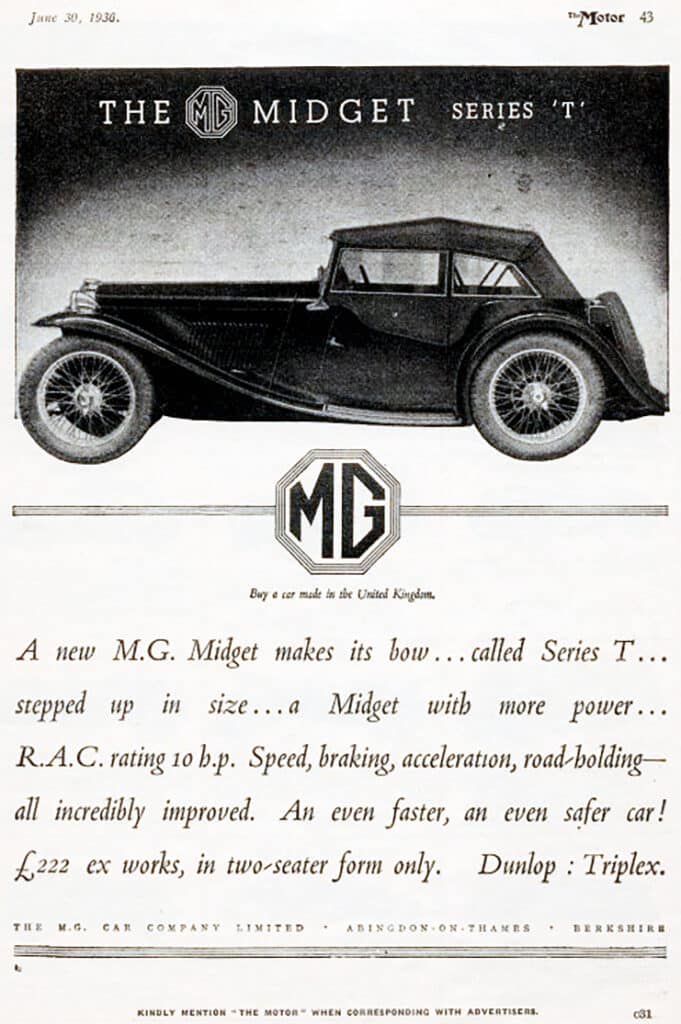
An advert for the launch of the MG Midget Series T in 1936. This became known as the TA after the TB was launched.
A New Start For The Midget
The 1936 TA Midget was the first new car to be released after these corporate changes. It was a new start for MG. It would live on lightly facelifted as the TB then TC until 1949. As part of the rationalisation process, they were forced to abandon the jewel-like baby OHC engine in that first generation of Midgets.
It was replaced with a seemingly less high-tech OHV unit with an unpromising history in Morris’s cars. Although at 1250cc it was larger and had considerably more torque. A young engineer called Claude Bailey, who later made quite a mark in the world of engine design at Jaguar, reworked what would become known as the XPAG engine for the short-lived pre-war TB, making it far more responsive and appropriate for sports cars. His work survived with very little change into the TC, TD and original 1250cc TF.
We will see how in part 3.
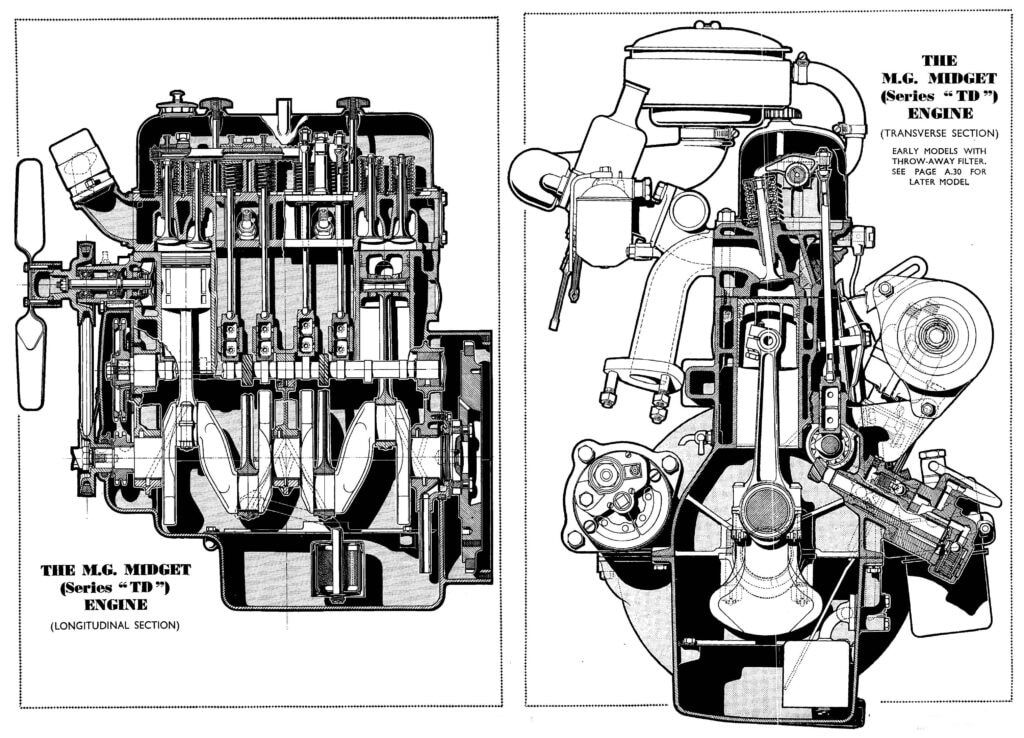
Cutaway section of the XPAG engine.
Pictures courtesy of: MG Car Club

